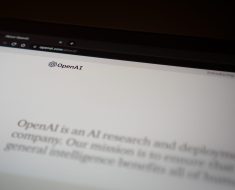Introduction
While OpenAI’s GPT-4 has made waves as a powerful large language model, its closed-source nature and usage limitations have left many developers seeking open-source alternatives. Fortunately, natural language processing (NLP) has seen a surge in powerful open-source models that match or exceed GPT-4’s capabilities in certain areas. Further in this article, we will give you 10 promising GPT-4 open-source alternatives worth exploring.

Understanding GPT-4 and Its Impact
GPT-4, the latest iteration of OpenAI’s Generative Pre-trained Transformer, has revolutionized natural language processing. Its ability to generate human-like text has sparked interest in various industries, from content creation to customer service.
Importance of Open-Source Alternatives to GPT-4
While GPT-4 is a powerful tool, its proprietary nature can be a barrier to entry for many developers and organizations. Open-source alternatives provide a more accessible and customizable option for those looking to leverage the power of language models without the constraints of proprietary software.
This article will explore 12 open-source alternatives to GPT-4 that offer similar capabilities and flexibility for developers and organizations looking to incorporate natural language processing into their projects.
GPT4ALL

GPT4ALL is an ambitious open-source initiative to develop a powerful language model comparable to GPT-4 but without the restrictions of proprietary models. Led by a team of researchers and developers, GPT4ALL leverages publicly available datasets and crowdsourced compute power to train a large-scale transformer model. The project’s goals include matching GPT-4’s performance across various natural language tasks while ensuring transparency, ethical practices, and accessibility for everyone. GPT4ALL’s collaborative approach allows contributors to participate in model training, evaluation, and deployment. GPT4ALL hopes to foster innovation, enable new applications, and promote responsible development within the AI community by democratizing access to advanced language AI capabilities.
Discord Link: Access Here
GitHub Link: Access Here
OPT (Open Pre-trained Transformer)

OPT is a suite of open-sourced large causal language models developed by Meta AI, ranging from 125M to 175B parameters. The OPT-175B model demonstrates comparable performance to GPT-3 while requiring only 1/7th the carbon footprint during development. OPT aims to share high-quality pre-trained transformer models with researchers responsibly, granting full access to model weights, unlike closed-source APIs. These decoder-only models are pre-trained on vast datasets, exhibiting remarkable zero-shot and few-shot learning capabilities across diverse natural language tasks. By open-sourcing OPT, Meta AI democratizes access to state-of-the-art language models, fostering research and innovation. The release includes a logbook documenting infrastructure challenges faced during development.
GitHub Link: Access Here
Huggingface Link: Access Here
OpenNMT

OpenNMT is an open-source toolkit for neural machine translation (NMT). Developed by researchers at Harvard University and others, it aims to democratize machine translation by providing a flexible and extensible platform. OpenNMT supports various model architectures, including RNNs, Transformers, and hybrid models.
It enables easy prototyping, training, and deployment of custom NMT systems across frameworks like PyTorch and Tensorflow. With multi-GPU support and efficient data parallelization, OpenNMT facilitates scaling NMT models. Its modular design allows easy integration of new models and techniques. OpenNMT has been widely adopted in research and industry for tasks like multilingual NMT, unsupervised NMT, and speech translation.
GitHub Link: Access Here
Website Link: Access Here
Koala

Koala is an open-source chatbot developed by leveraging the powerful LLaMa language model from Meta AI. Through fine-tuning techniques, the researchers behind Koala have adapted LLaMa’s general knowledge to create a specialized conversational AI assistant. Koala demonstrates strong language understanding and generation capabilities, enabling natural and contextual dialogue interactions. By building upon the solid foundation of LLaMa, Koala inherits its impressive few-shot learning abilities while tailoring its responses for chat-based applications. With its open-source nature, Koala allows developers and researchers to study, modify, and contribute to its codebase, fostering innovation in open-source conversational AI. As an accessible chatbot grounded in cutting-edge language model technology, Koala represents a significant step towards democratizing advanced dialog systems.
GitHub Link: Access Here
Website Link: Access Here
Open Assistant

Open Assistant is an open-source project aiming to democratize access to top-tier chat-based large language models. Its mission is to revolutionize language innovation by enabling open interaction with advanced language AI systems. Open Assistant empowers individuals to dynamically retrieve information, build novel language-driven applications, and use state-of-the-art conversational models. Remarkably, this powerful chatbot can run on a single high-end consumer GPU, making it accessible to a wide audience. With its code, models, and data released under open-source licenses, Open Assistant fosters transparency and collaborative development. By giving everyone the ability to leverage cutting-edge language technology, this project has the potential to unlock a new era of creativity and linguistic intelligence.
GitHub Link: Access Here
Website Link: Access Here
Alpaca-LoRA

Alpaca-LoRA is a compact language model that combines the Stanford Alpaca instruction-following model with low-rank adaptation (LoRA) techniques. LoRA allows high-quality models like Alpaca to be distilled into a low-memory form factor. This enables running an instruction model on par with GPT-3.5 on devices with just 4GB RAM, like a Raspberry Pi 4. The Alpaca-LoRA project provides code, datasets, and pre-trained weights to facilitate easy fine-tuning and deployment. A key advantage is fine-tuning the model on a single RTX 4090 GPU in hours. Alpaca-LoRA demonstrates how leading language AI can be highly accessible and computationally efficient.
GitHub Link: Access Here
Huggingface Link: Access Here
Also read: Process of Executing Alpaca-LoRA on Your Device
Vicuna 1.3

Vicuna 1.3 is a powerful 33-billion-parameter language model released by Anthropic and the University of California, Berkeley. It was fine-tuned from the LLaMA model using 125,000 conversations from ShareGPT.com, focusing on instruction-following abilities. Vicuna 1.3 demonstrates top performance on benchmarks like the Open LLM Leaderboard. Notably, it is available for free access and use on the HuggingFace model hub and through an official demo hosted by LM Systems. With its large-scale and targeted fine-tuning process, Vicuna 1.3 aims to push the boundaries of open-source language AI capabilities, especially in open-ended dialogue and multi-task instruction.
Huggingface Link: Access Here
Also read: Vicuna vs Alpaca: Which is a Better LLM?
Dolly

Dolly is a powerful open-source language model developed by Databricks, a leading data and AI company. Dolly is Trained in advanced machine learning techniques and massive datasets and demonstrates remarkable natural language understanding and generation capabilities. Unlike many large language models that remain closed-source, Dolly’s open nature allows researchers, developers, and organizations to access and build upon its architecture. Dolly excels at various NLP tasks, including text summarization, question answering, and code generation. Databricks’ goal with Dolly is democratizing access to cutting-edge language AI, enabling innovation across industries while promoting transparency and responsible AI development. With its strong performance and open philosophy, Dolly represents a significant step towards democratizing advanced language models.
GitHub Link: Access Here
Website Link: Access Here
Baize

Baize is an open-source multi-turn dialogue model demonstrating impressive conversational abilities while mitigating potential risks through carefully designed guardrails. Its strong performance stems from training on a high-quality multi-turn chat corpus developed by facilitating self-conversations using ChatGPT. This innovative approach allowed Baize to learn natural, contextual dialogue while incorporating safeguards against harmful outputs. Significantly, Baize’s code source, model, and dataset have been released under a non-commercial license for research purposes, promoting transparency and enabling further exploration in open-source conversational AI. By openly sharing this advanced dialogue system, the creators of Baize aim to drive progress in developing safe and robust multi-turn chatbots capable of fluid, extended interactions.
GitHub Link: Access Here
Research Paper: Access Here
MPT-30B-Chat

MPT-30B-Chat does MosaicML release a powerful open-source language model as part of their Foundation Series. It is a fine-tuned variant built on the base MPT-30B model, specifically designed for multi-turn conversational abilities. With 30 billion parameters, MPT-30B-Chat outperforms the original GPT-3 model. A key advantage is its large 8k token context window during training, allowing it to handle longer conversational contexts more effectively. It also benefits from efficient inference and training powered by techniques like FlashAttention. Notably, MPT-30B-Chat exhibits strong coding skills thanks to the pretraining data it was exposed to. MosaicML positions it as highly capable yet deployable on a single GPU.
GitHub Link: Access Here
Hugging Face Link: Access Here
Conclusion
In conclusion, the field of natural language processing is rapidly evolving, with a wide range of open-source alternatives to GPT-4 available to developers and organizations. By exploring these alternatives, developers can find the right tools and models to meet their specific needs and push the boundaries of language processing even further. Whether it’s machine translation, text generation, or sentiment analysis, a wealth of resources is available to help developers harness the power of language models for their projects.





